UPSC Daily Current Affairs- 2nd June 2024 | Current Affairs & Hindu Analysis: Daily, Weekly & Monthly PDF Download
GS-II/Polity and Governance
Statutory Bail
Source: Indian Express

Why in News?
Recently, the Delhi High Court granted statutory bail to a JNU scholar and student activist in connection with a communal riots case involving allegations of sedition.
Overview of Statutory Bail
Definition:
- Statutory bail is a legal provision that allows an undertrial (a person awaiting trial) to be released from custody under certain conditions.
- It is a right granted to an accused, no matter the crime committed.
- Ensures that undertrials are not detained indefinitely while awaiting their trial.
Legal Framework
- Section 436A of the Code of Criminal Procedure (CrPC) outlines the provision for statutory bail.
- Introduced through a 2005 amendment to tackle the issue of increasing undertrial prisoners in Indian jails.
Eligibility Criteria
- An undertrial is eligible for statutory bail if they have been in custody for more than half the maximum period of imprisonment prescribed for the offense.
- This calculation excludes cases where the death penalty is a possible punishment.
Release Conditions
- The undertrial can be released on bail through a personal bond, with or without sureties (guarantees).
- If the court denies statutory bail, it must provide written reasons for its decision.
Exclusions
- Statutory bail does not apply to offenses where the death penalty is a potential punishment.
- Any delays in legal proceedings caused by the undertrial themselves are excluded from the detention period calculation.
GS-II/Polity and Governance
Exit polls
Source: Indian Express
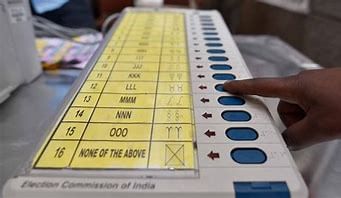
Why in News?
The exit polls are expected to begin as soon as the last vote is cast, of the seven-phase Lok Sabha elections 2024.
Overview of Exit Polls
Definition:
- Exit polls provide estimates on how people voted in an election.
- These estimates are derived from interviews with voters immediately after they leave polling stations and through other voter data calculations.
Timing:
- Typically, exit polls are released on the last day of voting.
- The Election Commission of India (ECI) mandates this timing to prevent influencing voters who have not yet voted.
Basis of Exit Polls
Survey Science:
- Exit polls and other surveys operate on the principle of collecting data from a large number of respondents.
- Structured questionnaires are used, administered either via telephone or face-to-face interviews.
Historical Context:
- The practice of exit polling in India started in 1957 during the second Lok Sabha elections, conducted by the Indian Institute of Public Opinion.
GS-II/Polity and Governance
Andhra’s Koya tribe faces brewing conflict over sacred Mahua flower
Source: The Hindu
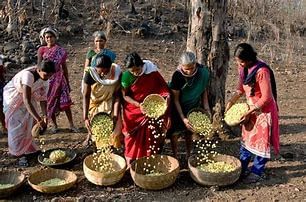
Why in News?
The Koya tribe resides in Andhra Pradesh. They face a cultural crisis due to intensified enforcement of liquor regulations by the Special Enforcement Bureau (SEB).
Overview of the Koya Tribe
Multi-Racial and Multi-Lingual Community:- The Koya tribe is one of the few multi-racial and multi-lingual tribal communities in India.
- They inhabit forests, plains, and valleys on both sides of the Godavari River in Andhra Pradesh, as well as in Madhya Pradesh and Orissa.
- The Koya believe their main deity resides in a cave in the Bastar region.
Cultural Crisis (Disruption of Traditions)
Mahua Liquor:
- Mahua liquor, brewed from Mahua tree flowers, is integral to Koya cultural and religious ceremonies, including naming ceremonies, weddings, and death anniversaries.
- Police raids and seizures of Mahua liquor disrupt these traditions, causing cultural shocks. For example, a recent naming ceremony had to proceed without Mahua liquor due to SEB raids.
Tribal Rights (Legal Challenges and Rights)
Prohibition Act Conflict:
- The Andhra Pradesh Prohibition Act, 1995, does not exempt the Koya tribe from brewing and storing Mahua liquor, despite its cultural importance.
- The Panchayat (Extension to Scheduled Areas) Act (PESA), 1996, empowers the gram sabha to protect tribal traditions, but its implementation is lacking, as SEB raids continue.
Coercion and Bribes:
- Koya villagers often face coercion and have to pay bribes to avoid legal charges, highlighting tensions between law enforcement and tribal rights.
Impact on Collection (Economic Consequences)
Economic Impact:
- Fear of police raids has led many Koya households to cease Mahua flower collection, affecting their primary income source.
- Destruction of freshly collected flowers during raids further discourages collection, reducing the supply of Mahua flowers in weekly markets where they are exchanged for essential goods.
Guardians of Culture (Preservation of Heritage)
Custodians of Culture:
- The Koya tribe, especially those not displaced by the Polavaram irrigation project, are seen as custodians of their culture.
- Displacement and integration with non-tribal communities threaten their cultural identity.
Empowering Koya Women:
- Local leaders and activists advocate for empowering Koya women with training to produce value-added products from Mahua flowers, instead of undermining their traditional practices and economic activities.
Legal and Policy Measures
Amend Prohibition Act:
- Amend the Andhra Pradesh Prohibition Act, 1995, to include exemptions or special provisions recognizing and protecting the traditional brewing and usage of Mahua liquor for cultural and religious purposes by the Koya tribe.
Strengthen PESA Act:
- Ensure full implementation of the Panchayat (Extension to Scheduled Areas) Act (PESA), 1996. Empower Gram Sabhas to protect tribal traditions, including the brewing of Mahua liquor.
Conclusion
- The enforcement actions by the SEB, aimed at regulating liquor, pose significant threats to the Koya tribe’s cultural heritage and economic well-being.
- Balancing legal regulations with respect for tribal traditions and rights is crucial to preserving the Koya way of life.
Mains PYQ:
What are the two major legal initiatives by state since Independence, addressing discrimination against Scheduled Tribes (ST) ? (UPSC IAS/2017)
GS-II/Health
Nelson Mandela Award for Health Promotion for 2024
Source: The Statesman
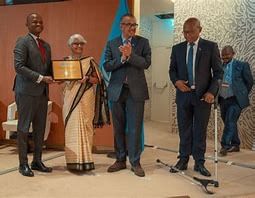
Why in News?
The National Institute of Mental Health and Neuro Sciences (NIMHANS) has been awarded the Nelson Mandela Award for Health Promotion for 2024
Overview of the Nelson Mandela Award for Health Promotion
Established by WHO:
- The Nelson Mandela Award for Health Promotion was established by the World Health Organization (WHO) in 2019.
- It recognizes individuals, institutions, and/or governmental or non-governmental organizations for remarkable contributions to health promotion.
India's Achievements in Mental Health
Major Strides in Mental Health:
- India has made significant progress in mental health care in recent years.
- Mental Health Units: Supported in almost all districts of the country through the National Health Mission.
National Tele Mental Health Helpline:
- Tele MANAS: Launched on October 10, 2022.
- Achieved the milestone of handling 10 lakh (1 million) calls, indicating its wide reach and impact.
GS-II/International Relations
India-Japan Joint Working Group on Counter Terrorism
Source: The Print
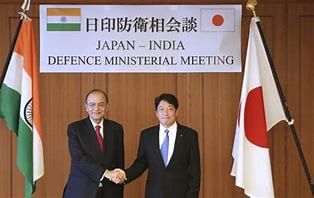
Why in News?
The 6th Meeting of the India-Japan Joint Working Group on Counter-Terrorism was held in New Delhi.
Overview of Counter-Terrorism Cooperation
Discussion Points:
- Both sides discussed terrorist threats in their regions, including state-sponsored cross-border terrorism in Asia.
- They assessed challenges such as the use of new technologies by terrorists, internet misuse, radicalization, and terror financing.
- Addressed issues like countering terror financing, organized crime, and narco-terror networks.
Emphasis on Cooperation:
- Both sides emphasized the importance of strengthening counter-terrorism cooperation through exchanging information, capacity building, training programs & exercises, and cooperation at the multilateral fora, such as the United Nations, Financial Action Task Force, and QUAD.
Understanding Terrorism
Definition:
- Terrorism involves a range of threats: organized terrorism in conflict zones, foreign terrorist fighters, radicalized lone wolves, and attacks using chemical, biological, radiological, nuclear, and explosive materials.
- It deliberately targets civilians to create terror and is rooted in socio-political grievances, extremism, or radical ideologies.
Challenges in Tackling Terrorism
- Evolving Techniques: Terrorist groups constantly change their tactics to evade detection, including using drones for cross-border trafficking and attacks.
- Transnational Nature: Terrorism often crosses national borders, complicating individual nations' efforts to address the threat effectively.
- Root Causes: Addressing terrorism's root causes, such as poverty, inequality, political grievances, and extremist ideologies, requires long-term strategies beyond traditional security measures.
- Civil Liberties and Human Rights: Balancing security with protecting civil liberties and human rights is challenging. Measures like surveillance, detention without trial, and speech restrictions raise ethical concerns.
- Cyberterrorism: The internet facilitates terrorist propaganda, recruitment, and coordination. Combating online radicalization requires government, tech company, and civil society collaboration.
- Financing and Resources: Disrupting terrorist financing is difficult due to informal channels, money laundering techniques, and legitimate financial institutions.
- Lone Actors: Homegrown terrorists and lone actors, who may lack direct ties to terrorist groups, are harder to detect and prevent.
Global Measures to Combat Terrorism
- UN Counterterrorism Framework: The UN Security Council has adopted resolutions for counterterrorism actions, including preventing terrorist financing and strengthening border security.
- Financial Action Task Force (FATF): An intergovernmental organization setting standards and promoting anti-money laundering and counterterrorism financing policies.
- Global Counterterrorism Forum (GCTF): A multilateral forum facilitating cooperation and capacity-building initiatives to enhance counterterrorism efforts.
- Intelligence Sharing and Cooperation: Bilateral and multilateral agreements enable countries to exchange information on terrorist threats, suspects, and activities.
India’s Policy on Tackling Terrorism
- UAPA Amendment: In August 2019, India amended the Unlawful Activities (Prevention) Act to designate individuals as terrorists, not just organizations.
- Zero-Tolerance Policy: India advocates zero tolerance against terrorism and aims to develop a common strategy to combat it.
- National Investigation Agency (NIA): India’s counter-terrorist task force empowered to deal with terror-related crimes across states, established after the 2008 Mumbai attack.
- Comprehensive Integrated Border Management System: Enhances the Border Security Force’s ability to detect and control cross-border crimes, including illegal infiltration, smuggling, human trafficking, and terrorism.
- UNSC Action Plan: In 2021, India presented an eight-point action plan at the 20th anniversary of UNSC Resolution 1373 to address terrorism.
Conclusion
- Comprehensive Efforts: Countering radicalization and addressing socio-economic and political grievances are crucial for effective counterterrorism.
- Collaboration: Cybersecurity collaboration is essential to combat cyberterrorism and prevent terrorists from using the internet for recruitment and propaganda.
GS-III/Environment and Ecology
Monsoon Croaks Bioblitz: Protecting Kerala’s Frog Species
Source: The Hindu
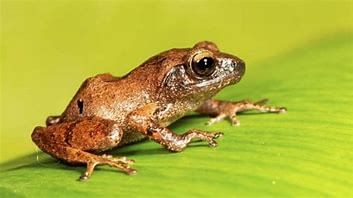
Why in News?
The Centre for Citizen Science and Biodiversity Informatics, Kerala Forest Research Institute (KFRI), has organised the event “Monsoon Croaks Bioblitz 2024”.
Monsoon Croaks Bioblitz, 2024
Program Aim:
- Document Kerala’s Frog Species: Focused on the monsoon season.
Objective:
- Cultivate Scientific Curiosity: Engage the public in scientific exploration.
- Raise Awareness: Promote frog conservation through social media like posters and articles.
What is a Bioblitz?
- Definition: An intensive survey to identify and document as many species as possible within a designated area. It’s a popular participatory survey method globally.
Project Details:
- Participation: Open to people of all ages who can upload frog photographs and sounds using the iNaturalist app.
- Data Utilization: Observations will contribute to the Global Biodiversity Information Facility (GBIF), aiding biodiversity awareness, habitat conservation, and climate change research.
Need for the Event:
- Monsoon Activity: Monsoon is the peak activity and breeding period for frogs.
- Threats to Frogs: Frogs are crucial indicators of ecosystem health but face threats from climate change, habitat loss, and water pollution.
- Endangered Species: 41% of the world’s frog species are on the IUCN Red List, including many in Kerala.
Results of 2023:
- Previous Participation: The 2023 Monsoon Croaks project saw enthusiastic participation from citizens across Kerala.
- Citizen Scientists: Around 200 citizen scientists uploaded 1,223 observations, identifying approximately 80 amphibian species, including those on the IUCN Red List.
Notable Species:
- Wayanad Bush Frog (Pseudophilautus wynaadensis): The most observed species.
- Asian Common Toad (Duttaphrynus melanostictus): Second most observed species.
- Other Important Amphibians:
- Critically Endangered: Resplendent Shrub Frog (Raorchestes resplendens).
- Endangered: Malabar Torrent Toad (Blaira ornata).
- Small Tree Frog (Rhacophorus lateralis).
- Vulnerable: Anaimalai Flying Frog (Rhacophorus pseudomalabaricus).
- Near Threatened: Purple Frog (Nasikabatrachus sahyadrensis).
GS-III/Environment and Ecology
India to Secure Coking Coal and Critical Minerals from Mongolia
Source: Business Standard

Why in News?
India looks to advance into Mongolia to secure coking coal and critical minerals like copper and rare earth elements.
Joint Working Groups with Mongolia
Objective:
- Exploring Collaboration: Joint working groups have been established with the Mongolian embassy to explore collaboration opportunities with Mongolia, a land-locked Central Asian nation.
Challenges:
- Mineral Evacuation: The evacuation of minerals remains a concern.
- Alternative Routes: India is exploring alternative routes through Russia, as it is unwilling to route the evacuation process through China.
Critical Minerals
Definition:
- Essential Elements: Critical minerals are elements crucial for modern technologies, at risk of supply chain disruptions.
- Supply Chain Vulnerabilities: The concentration of extraction or processing in a few locations can lead to supply chain vulnerabilities and disruptions.
Applications:
- Clean Technologies: Used in zero-emission vehicles, wind turbines, solar panels.
- Specific Minerals:
- Cadmium, Cobalt, Gallium, Indium, Selenium, Vanadium: Used in batteries, semiconductors, solar panels.
- Advanced Manufacturing:
- Defense Applications, Permanent Magnets, Ceramics: Minerals like Beryllium, Titanium, Tungsten, Tantalum are used in these applications.
- Medical and Electronics:
- Platinum Group Metals (PGMs): Used in medical devices, cancer treatment drugs, dental materials.
Critical Minerals List:
- Country-Specific Lists: Each country has its own list based on specific needs and priorities.
- India's Critical Minerals:
- A list of 30 critical minerals includes Antimony, Beryllium, Bismuth, Cobalt, Copper, Gallium, Germanium, Graphite, Hafnium, Indium, Lithium, Molybdenum, Niobium, Nickel, PGE, Phosphorous, Potash, REE, Rhenium, Silicon, Strontium, Tantalum, Tellurium, Tin, Titanium, Tungsten, Vanadium, Zirconium, Selenium, and Cadmium.
- Two are specifically critical for fertilizers: Phosphorous and Potash.
Coking Coal
Definition:
- Type of Coal: Coking coal, or metallurgical coal, is used in steelmaking.
- Properties: Needs high carbon content, low sulfur, and phosphorus content, and strong coking properties.
- Steelmaking: Essential for producing coke, a key component in steel production.
- India's Dependence: India imports coking coal from Australia, the U.S., and Russia.
Way Ahead
International Collaboration:- Securing Energy Requirements: India collaborates with countries like Africa, Argentina, Australia, and Mongolia.
- Importance of Critical Minerals: Essential for economic development and national security.
- Energy Transition: Minerals like Lithium and Cobalt are crucial for India's commitment to energy transition and achieving net-zero emissions by 2070.
GS-III/ Environment and Ecology
Water storage at just 23% in India’s key reservoirs
Source: DTE

Why in News?
Water storage in India’s key reservoirs was down to just 23 per cent of their total capacity amid a relentless heatwave in many parts of the country,Current Storage Data:
- Data Source: Central Water Commission (CWC)
- 150 Major Reservoirs:
- Zero Storage: 8 reservoirs in Maharashtra, Karnataka, Telangana, Andhra Pradesh (AP), and Uttarakhand.
- Less than 10% Storage: 4 reservoirs in AP, Gujarat, Maharashtra, and Karnataka.
- Southern Region: Most affected, including AP, Telangana, Karnataka, Kerala, and Tamil Nadu.
- Other Regions:
- Northern: 30% of capacity
- Eastern: 28% of capacity
- Central: 29.1% of capacity
- Ganga River Basin: 31.99% of capacity
Causes of Decline in Water Storage
Monsoon Rainfall:
- Below-average monsoon rainfall last year.
- Less monsoon rain means reduced storage during the rainy season and increased withdrawal post-monsoon for drinking and irrigation.
El Nino Weather Phenomenon:
- Lower rainfall due to El Nino.
- Insufficient rainfall leads to water scarcity, droughts, and prolonged dry periods across Asia.
Impacts of Water Shortage
Socio-Economic Effects:
- Affects irrigation, drinking water supply, and domestic consumption.
- Impacts livelihoods and agricultural activity in regions dependent on river water.
- Low reservoir levels can reduce yields of summer crops (sown between Rabi and Kharif seasons).
River Systems:
- Provide water for various needs, cheap transportation, and electricity.
- Water shortage affects overall socio-economic conditions.
Steps Taken
State Government Initiatives:
- Water resources projects are planned, funded, executed, and maintained by state governments.
- Projects are aligned with their resources and priorities.
Central Government Support:
- Provides technical and financial assistance for sustainable development and efficient management of water resources.
- Supports various schemes and programs.
Specific Initiatives:
- Master Plan for Artificial Recharge to Groundwater-2020: Prepared by CGWB in consultation with States/UTs.
- A macro-level plan indicating various structures for different terrain conditions.
- Jal Shakti Abhiyan: Catch the Rain (JSA): Launched by the Prime Minister to promote water conservation.
- Master Plan for Artificial Recharge to Groundwater-2020: Prepared by CGWB in consultation with States/UTs.
Way Forward
Monsoon Forecast: Farmers are hopeful for an ‘above normal’ southwest monsoon to ensure sufficient rain for Kharif crop sowing.
Adequate Water Storage: Due to significant variation in rainfall distribution, adequate water storage is essential for managing water resources efficiently.
|
59 videos|5388 docs|1140 tests
|
















